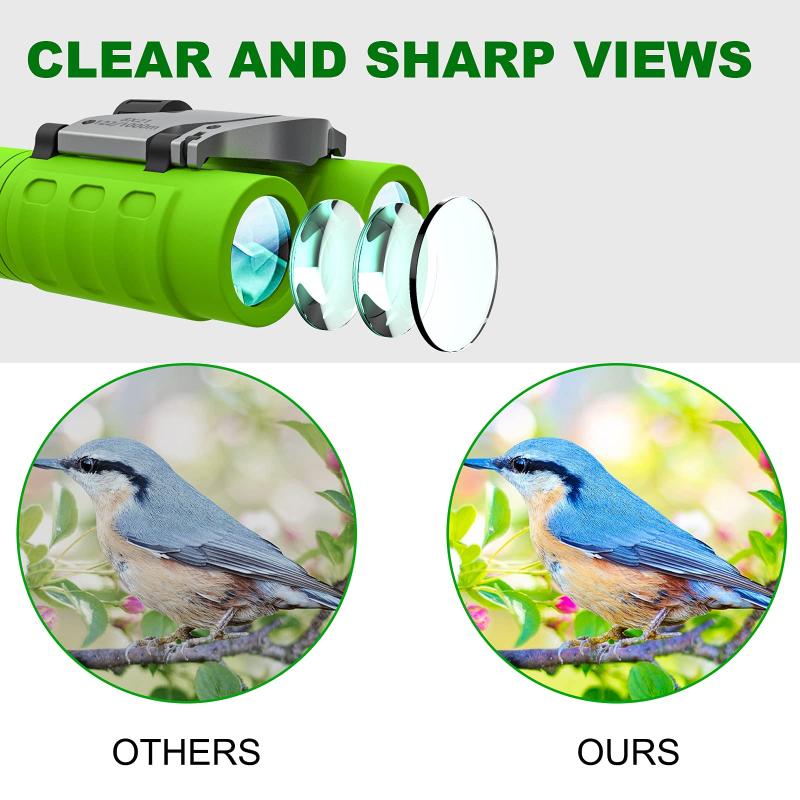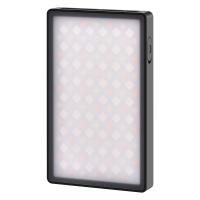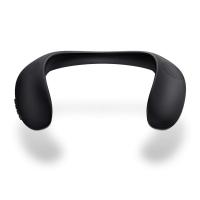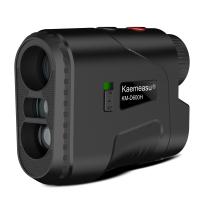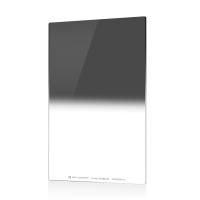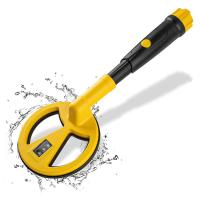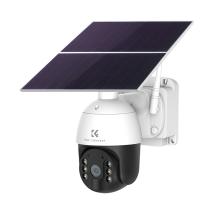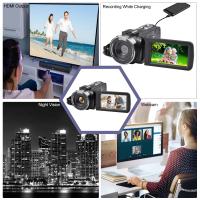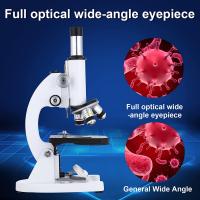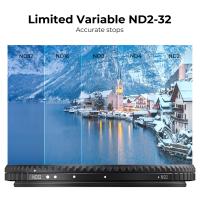How To Use Binoculars For Birding ?
To use binoculars for birding, start by adjusting the eyecups to your comfort level. Hold the binoculars with both hands and bring them up to your eyes, keeping your elbows close to your body for stability. Look through the binoculars and use the central focusing wheel to bring the bird into sharp focus. If needed, adjust the diopter setting to match your eyesight. Scan the area slowly, using small movements, and focus on the bird's features such as color, shape, and behavior. Take note of any field marks or distinctive characteristics. Practice tracking birds in flight by following their movement with the binoculars. Remember to be patient and observant, and enjoy the experience of birding with binoculars.
1、 Adjusting the focus and diopter settings for optimal clarity.
How to use binoculars for birding: Adjusting the focus and diopter settings for optimal clarity.
Binoculars are an essential tool for birdwatchers, allowing them to observe birds in detail from a distance. To make the most of your birding experience, it is important to know how to properly use binoculars and adjust them for optimal clarity. Here are some steps to follow:
1. Adjust the interpupillary distance: Start by adjusting the distance between the eyepieces to match the distance between your eyes. Hold the binoculars up to your eyes and move them closer or farther apart until you see a single, circular field of view.
2. Adjust the focus: Look at a distant object and turn the central focusing wheel until the image becomes sharp and clear. It is important to focus on the bird you are observing to capture the finest details.
3. Adjust the diopter setting: The diopter adjustment allows you to compensate for any differences in vision between your eyes. Close your right eye and focus on a distant object using only your left eye. Turn the diopter adjustment ring until the image is sharp. Then, close your left eye and open your right eye. Use the central focusing wheel to bring the image into focus. Both eyes should now have a clear view.
4. Practice using binoculars: It may take some time to become comfortable using binoculars, especially if you are new to birding. Practice focusing on different objects at varying distances to improve your skills.
5. Keep up with the latest technology: Binoculars have evolved over the years, with advancements in lens coatings, image stabilization, and lightweight materials. Stay informed about the latest developments in binocular technology to enhance your birding experience.
Remember, using binoculars for birding is not just about magnification; it's about achieving optimal clarity and focus. By following these steps and staying up to date with the latest advancements, you can make the most of your birdwatching adventures.
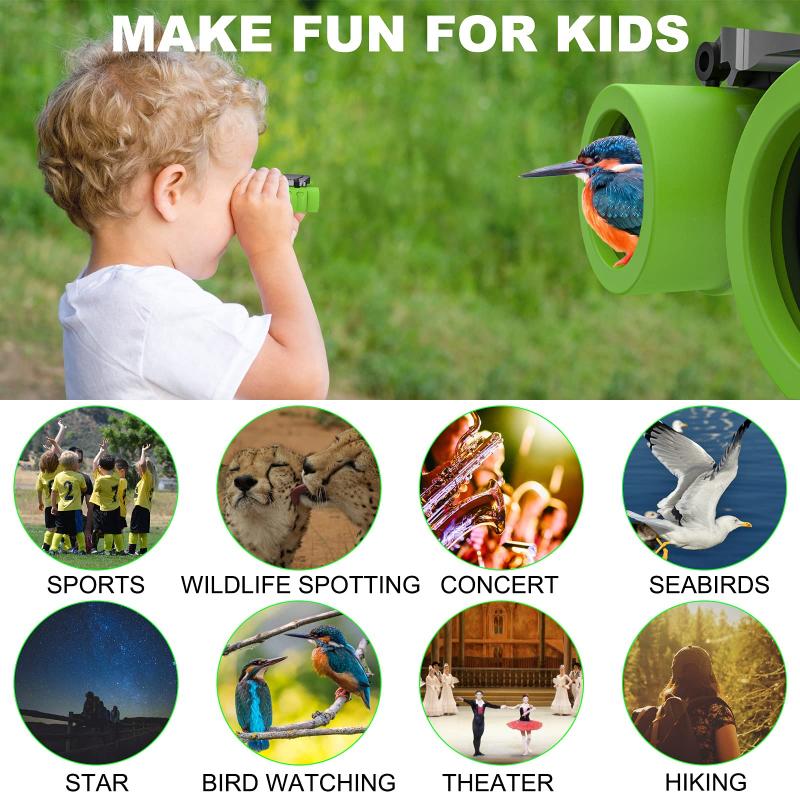
2、 Holding the binoculars steady to minimize hand shake.
Holding the binoculars steady to minimize hand shake is an essential technique for birding enthusiasts. Binoculars are a valuable tool for observing birds in their natural habitats, but without proper stabilization, the image can become shaky and difficult to focus on. Here's a guide on how to use binoculars for birding effectively:
1. Adjust the binoculars: Start by adjusting the interpupillary distance, which is the distance between the eyepieces. Set it to match the distance between your eyes for a comfortable viewing experience. Additionally, adjust the focus wheel to ensure a clear image.
2. Find a stable position: Look for a stable position to minimize hand shake. Rest your elbows on a solid surface like a tree trunk, fence, or tripod if available. This will provide additional support and reduce any movement.
3. Use your body as support: Press the binoculars against your forehead or eyebrow ridge to stabilize them further. This technique helps to anchor the binoculars and reduce hand shake.
4. Control your breathing: Take slow, deep breaths and try to hold your breath momentarily while observing birds. This technique helps to minimize any movement caused by breathing.
5. Practice patience: Birding requires patience, especially when trying to spot elusive species. Take your time to scan the area slowly and steadily, allowing your eyes to adjust and focus on the birds.
6. Consider image stabilization technology: Some binoculars come with built-in image stabilization technology, which can significantly reduce hand shake. These binoculars use gyroscopes or electronic sensors to stabilize the image, providing a clearer view even when holding them by hand.
It's worth noting that advancements in technology have led to the development of binoculars with image stabilization, making it easier for birders to observe birds without the need for additional stabilization techniques. These binoculars can be a great investment for those who frequently engage in birding activities.
In conclusion, holding the binoculars steady to minimize hand shake is crucial for successful birding. By following these techniques and considering the latest advancements in binocular technology, birders can enhance their birding experience and enjoy the beauty of birds in their natural habitats.
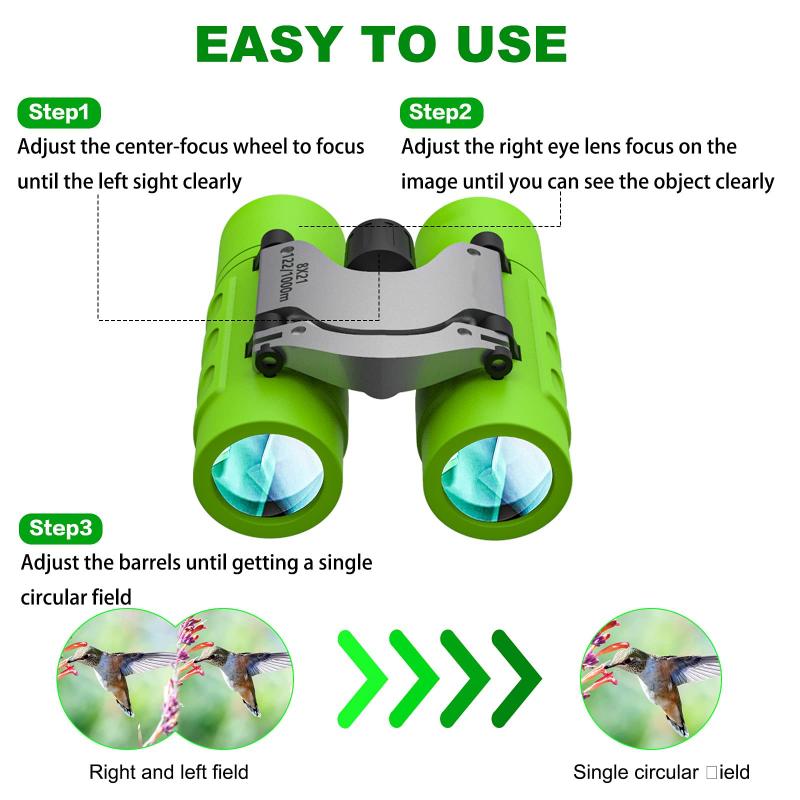
3、 Scanning the area systematically to locate birds.
How to use binoculars for birding:
Binoculars are an essential tool for birdwatching, allowing you to observe birds in detail from a distance. Here's a step-by-step guide on how to use binoculars effectively for birding:
1. Adjust the binoculars: Start by adjusting the binoculars to fit your eyes. Most binoculars have a central focusing knob and individual eyepiece adjustments. Look through the binoculars and adjust the focus until the image appears sharp and clear.
2. Hold the binoculars steady: To minimize shaking and achieve a stable view, hold the binoculars close to your face with both hands. Rest your elbows on a solid surface or use a tripod if necessary.
3. Scanning the area systematically: Instead of randomly scanning, it's best to scan the area systematically to locate birds. Start from one side and move your gaze slowly across the landscape, focusing on different areas. This method ensures you don't miss any birds and allows you to cover a larger area efficiently.
4. Observe bird behavior: Once you spot a bird, observe its behavior and characteristics. Note its size, shape, color patterns, and any distinctive features. Pay attention to its movements, flight patterns, and vocalizations. These details will help you identify the species accurately.
5. Use the binoculars to zoom in: When you have located a bird, use the binoculars to zoom in for a closer look. Adjust the focus if needed to ensure a clear view. Take your time to observe the bird's plumage, beak shape, and other identifying features.
6. Take notes or use a field guide: If you're a beginner or unfamiliar with the bird species, it's helpful to take notes or use a field guide to identify the bird later. Note down its behavior, habitat, and any other relevant details.
In recent years, there have been advancements in binocular technology, such as image stabilization and enhanced lens coatings, which provide clearer and more stable views. Additionally, some binoculars now come with built-in digital cameras, allowing you to capture photos or videos of the birds you observe.
Remember, birding is a patient and rewarding hobby. With practice and the right equipment, binoculars can greatly enhance your birdwatching experience, enabling you to appreciate the beauty and diversity of avian life.
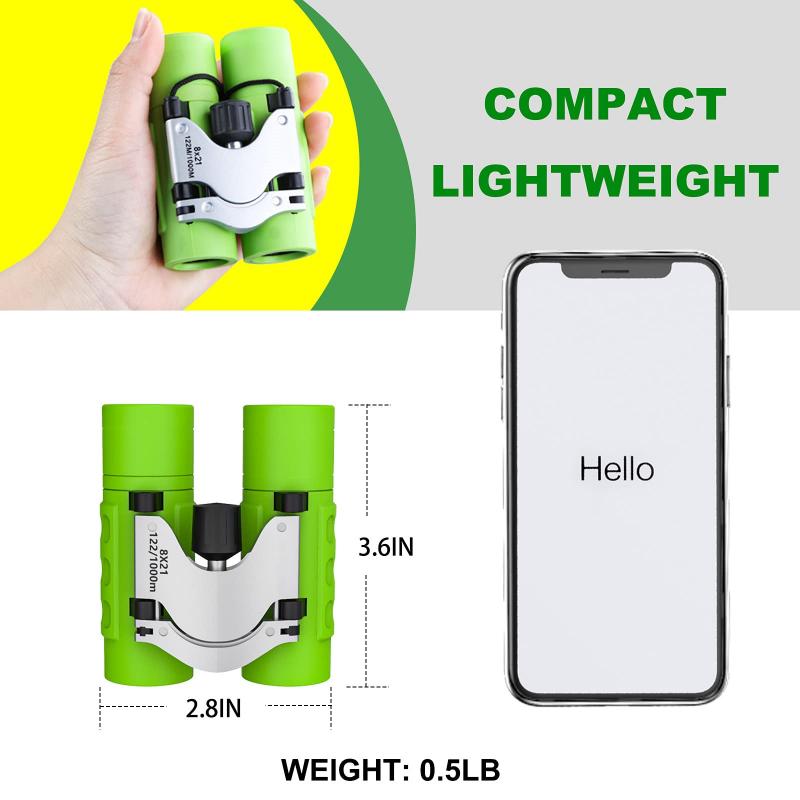
4、 Identifying birds based on size, shape, color, and behavior.
Identifying birds based on size, shape, color, and behavior is a fundamental skill for birdwatchers. Binoculars are an essential tool that can greatly enhance your birding experience by allowing you to observe birds in detail from a distance. Here's how to use binoculars effectively for birding:
1. Choose the right binoculars: Opt for binoculars with a magnification between 7x and 10x and an objective lens diameter of 32mm to 42mm. This range provides a good balance between magnification and field of view.
2. Adjust the binoculars: Set the interpupillary distance to match the width of your eyes. Adjust the focus wheel to ensure a clear image. Some binoculars also have a diopter adjustment to compensate for differences in your eyesight.
3. Observe bird behavior: Watch how the bird moves, flies, feeds, and interacts with its surroundings. Note any distinctive behaviors or patterns that can help with identification.
4. Pay attention to size and shape: Compare the bird's size to familiar objects or other birds nearby. Note the shape of its body, beak, wings, and tail. These characteristics can provide valuable clues for identification.
5. Observe color patterns: Take note of the bird's overall coloration, including the head, body, wings, and tail. Look for distinctive markings, such as eye rings, wing bars, or patches of color. Consider the bird's color in different lighting conditions.
6. Use field guides or birding apps: Consult field guides or birding apps to help narrow down your identification. These resources provide detailed information on bird species, including range maps, habitat preferences, and vocalizations.
7. Practice patience and observation: Bird identification can be challenging, especially for beginners. Take your time, observe the bird's behavior and characteristics carefully, and compare your observations with field guides or experienced birders.
Remember, bird identification is a skill that improves with practice. By using binoculars effectively and paying attention to size, shape, color, and behavior, you can enhance your birding experience and develop a deeper understanding of the avian world.
